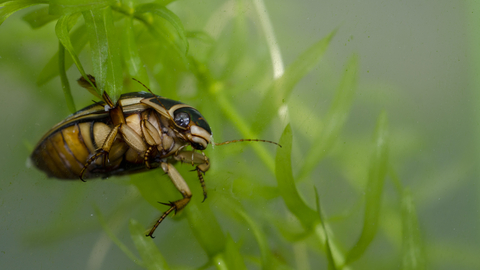
Great Diving Beetle ©Jack Perks
Great diving beetle
Scientific name: Dytiscus marginalis
The Great diving beetle is a large and voracious predator of ponds and slow-moving waterways. Blackish-green in colour, it can be spotted coming to the surface to replenish the air supply it stores beneath its wing cases.
